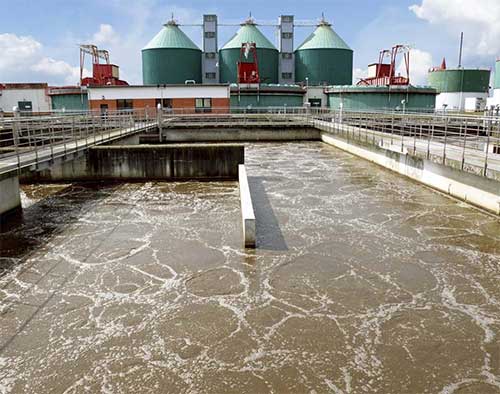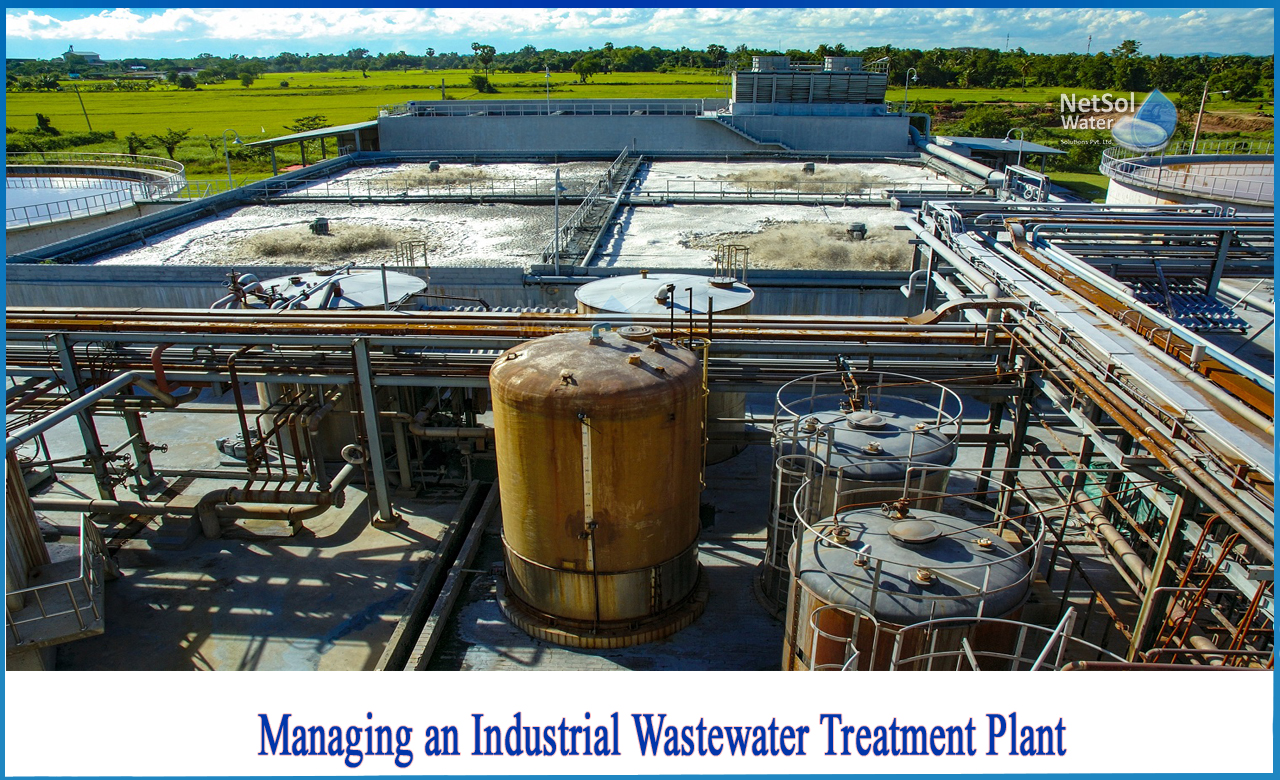Industrial Waste Water Treatment-- Efficient Waste Management for Manufacturing Facilities
Wiki Article
Challenges and Solutions in Hazardous Waste Water Treatment
The therapy of commercial wastewater provides a diverse selection of difficulties, varying from rigorous regulatory compliance to the ins and outs of expense monitoring and technical constraints. The variability in waste composition even more makes complex the performance of conventional therapy methods, commonly resulting in intensified operational expenses. However, emerging options such as innovative oxidation processes and cutting-edge financing models reveal promise in dealing with these concerns. As sectors face the demand for sustainable techniques, the inquiry continues to be: what approaches will inevitably lead to a balance in between conformity, cost-efficiency, and ecological responsibility?Regulatory Conformity Obstacles
Exactly how can commercial facilities browse the complex landscape of governing compliance in wastewater treatment? The regulative structure regulating wastewater monitoring is diverse, frequently differing by jurisdiction and kind of industry.To successfully manage these compliance obstacles, centers should apply durable tracking and reporting systems that ensure real-time information collection and analysis. Normal audits and danger analyses can identify prospective conformity spaces, enabling proactive adjustments in therapy processes. Worker training programs concentrating on regulatory understanding and finest practices are vital to foster a culture of conformity within the company.
Additionally, involving with regulative agencies can supply important understandings and clear up ambiguous laws. Facilities might also gain from speaking with environmental professionals that focus on wastewater therapy compliance, ensuring that they remain informed of developing laws. By adopting these methods, industrial centers can not only satisfy compliance demands but likewise boost their functional efficiency and ecological stewardship.
Price and Economic Obstacles
Navigating regulative conformity in wastewater therapy usually presents considerable financial obstacles for industrial facilities. The expenses linked with implementing required therapy innovations, preserving conformity with rigorous guidelines, and managing operational expenses can be discouraging. Numerous companies encounter high preliminary capital investment for the building or updating of wastewater treatment plants, which may strain budget plans, particularly for little and medium-sized business.Moreover, recurring functional prices, including labor, upkeep, and chemical inputs, add to the financial concern. The unpredictability of rising and fall power rates and the possible need for additional financial investments to fulfill evolving policies exacerbate these economic pressures. Oftentimes, the lack of financial motivations or assistance from federal government bodies makes it a lot more difficult for services to validate investments in advanced therapy systems.
In addition, the economic feasibility of wastewater therapy options is commonly questioned, particularly for markets with limited earnings margins. It is important for industrial centers to explore cost-efficient methods, such as adopting ingenious financing choices, engaging in partnerships, and leveraging arising technologies that can assist mitigate these financial obstacles while making certain compliance with ecological requirements.

Technological Limitations
Countless technical restrictions prevent the efficiency of industrial wastewater therapy processes. One substantial difficulty is the inadequacy of existing treatment modern technologies to attend to complex pollutants.Additionally, the scalability of therapy technologies postures a challenge. While some advanced techniques, like membrane filtration or advanced oxidation, reveal guarantee in controlled environments, their application on a bigger scale can be excessively expensive and technically tough. Upkeep and operational complexities better make complex the adoption of these systems, particularly for smaller sized industries with limited technological know-how.
The integration of real-time surveillance modern technologies also stays not enough in many treatment centers. Without reliable click here for more surveillance systems, operators can not effectively assess treatment efficiency or identify prospective failings, resulting in irregular effluent high quality. Attending to these technical limitations through check study and development, alongside financial investment in cutting-edge solutions, is important for enhancing the efficiency of industrial wastewater treatment and making sure regulative compliance.
Variability in Waste Make-up
In the world of commercial wastewater treatment, the variability in waste structure presents a formidable obstacle. Industries produce wastewater with diverse qualities, influenced by variables such as manufacturing procedures, basic materials, and operational techniques. This diversification complicates the treatment procedure, as conventional systems frequently have a hard time to efficiently address the variety of contaminants present.For circumstances, wastewater from food processing may contain high levels of natural matter, while effluents from chemical production might include hefty metals and dangerous materials. This variation necessitates versatile therapy strategies to make sure compliance with ecological regulations and shield public health and wellness. Additionally, changes in waste make-up can happen over time, influenced by modifications in manufacturing routines, upkeep tasks, or the introduction of brand-new products.

Cutting-edge Therapy Solutions
Innovative therapy services are Home Page essential for addressing the complexities of commercial wastewater administration. Conventional approaches typically drop short in properly eliminating a variety of impurities, especially in centers with diverse effluent streams. Current advancements concentrate on incorporating cutting-edge innovations to boost treatment performance and sustainability.One promising technique is making use of sophisticated oxidation procedures (AOPs), which utilize powerful oxidants to break down natural pollutants. AOPs, consisting of photocatalysis and ozonation, can dramatically minimize poisonous substances and improve effluent high quality. In addition, membrane layer bioreactor (MBR) technology has acquired grip, incorporating organic treatment with membrane filtration, leading to high-grade effluent and reduced impact.
Another ingenious option is the execution of source recuperation systems. Strategies like anaerobic food digestion not only treat wastewater however likewise generate biogas, which can be utilized as a renewable resource resource. The fostering of fabricated knowledge and maker discovering designs can maximize therapy processes by forecasting variants in wastewater structure, thereby enhancing operational effectiveness.
These innovative options not only address regulatory conformity yet also promote environmental sustainability, leading the way for a more resistant and reliable commercial community.
Conclusion
To conclude, resolving the difficulties of industrial wastewater treatment calls for a multifaceted strategy that incorporates regulative compliance, cost administration, and technical improvements. Ingenious remedies, such as sophisticated oxidation processes and membrane layer bioreactor modern technology, offer paths to enhance treatment performance. Real-time monitoring systems and joint engagement with regulative companies can advertise sustainable practices while minimizing economic stress. A dedication to continual enhancement in treatment methods will ultimately add to the efficient monitoring of commercial wastewater and environmental management.The treatment of commercial wastewater presents a diverse range of difficulties, varying from rigid regulatory compliance to the ins and outs of expense administration and technical limitations. Industrial Waste Water Treatment.Browsing regulative compliance in wastewater treatment commonly offers substantial economic obstacles for industrial facilities. Resolving these technical restrictions with research and development, alongside financial investment in innovative remedies, is critical for improving the efficacy of commercial wastewater therapy and guaranteeing regulatory conformity
Wastewater treatment facilities have to spend in durable tracking systems and versatile therapy technologies capable of accommodating differing influent attributes.In final thought, attending to the obstacles of commercial wastewater therapy calls for a diverse approach that incorporates regulative compliance, cost monitoring, and technological improvements.
Report this wiki page